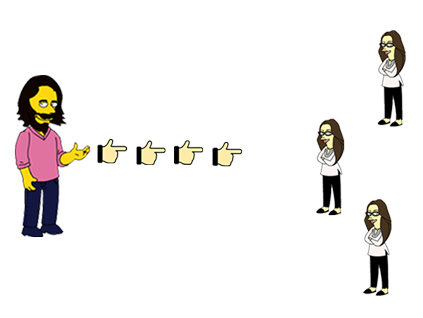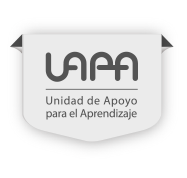Content
Demonstrative adjectives
Hey there! Maybe you think that grammar is boring, but in this section, we will try to show you that it doesn’t have to be boring. In this section, we will explore two aspects.
Firstly, in this module we will analyse:
- Which the demonstrative adjectives are
- What a demonstrative adjective does
- How to differentiate and use them
We will also make a short review on the most critical aspects of the passive voice in present and past.
You’ll see it is not that difficult.
So, let’s get to work!
To start with, listen to the next dialogue:
This family has a conversation about one common object: tea bags. Let’s focus on the two grammar aspects of this module. Look at the following chart:
a. This is the best tea I’ve ever had!
The word THIS is an adjective. But it is a particular kind of adjective. It shows ONE element CLOSE to the person speaking.
Look at the picture:

This Person
Stomne. (2007). Simpsonized. Retrieved 28/12/16 from https://flic.kr/p/2A3pX3
Doctorlizardo. (2007). Me simpsonized. Retrieved 28/12/16 from https://flic.kr/p/2uubae
b. That is not a New York mug.
The word THAT is another demonstrative adjective. It shows ONE element FAR from the person speaking.
Look at the picture:

That Person
c. Look at all these tea bags you got!
The word THESE is another demonstrative adjective. It shows TWO or MORE elements CLOSE to the person speaking
Look at the picture:

These People
d. Bring me one of those Indian Chai tea bags.
THOSE is another demonstrative adjective. It shows TWO or MORE elements FAR from the person speaking
Look at the picture:

Those People
Demonstrative adjectives are very easy to understand, look:
 THIS tea bag is made in India. |
 THAT tea bag is made in India. |
 THESE tea bags are made in India. |
 THOSE tea bags are made in India. |
Emeraldimp. (2005). Teabag. Retrieved 16/02/17 from |
|
PRONUNCIATION: THIS vs THESE
Before we start practicing our main topic, let’s review some verbs in past participle.
Exercise 1. Memory Game
Passive Voice
Finally, we will take a quick look at passive voice. To do that, listen again to the dialogue you heard before:
This time, let’s have a closer look at this passive voice sentence:
That mug was probably made in China!
Passive voice sentences have specific characteristics that make them different from active voice sentences.
A passive sentence begins with the object affected by the verb:
Click on the word:
The next element is the verb in passive structure:
After the verb in passive structure, you can have different factors: the subject of the action verb, when an action is done, or, like in this example, the place where something was done:
Now look at the following chart with the main characteristics of passive voice:
We emphasise on the object/action of a sentence and not the subject.
We give more importance to the object because we don’t know the subject of the action, because the subject is obvious, or just because it is not relevant to the information:
Passive
My mug is made in Vietnam.
Active
A Vietnamese person made my mug.
I want to talk about my MUG, not about a Vietnamese person.
The passive structure uses the verb to be & an action verb in participle.
The structure of the passive contains.
• The verb to be and it expresses the tense of the sentence.
Tea was produced in India.
Tea bags were invented in the US.
My mug is made in Vietnam.
The verb to be in the past tense means that the sentence changed to the passive voice. The second sentence also contains verb to be in the past, but the use of was means plural. Finally, in the third sentence, uses the verb to be in the present.
• The action verb in the past participle
This tea was produced in India.
Tea bags were invented in the US.
Tea bags were shipped from New York.
The main verb in the sentence must be in the participle form. This verb gives meaning to all the sentence because it expresses the action performed.
We use passive voice to talk about the characteristics of objects.
As we previously said, passive voice is used to emphasise the object, its description, manufacture and origin:
Tea bags were made by hand.
Tea bags were invented in the US.
Exercise 2. Completing the text
To say that a car is manufactured in only one country is wrong. Most of the pieces are made in different countries. Here we have an example of it.
Read about how cars are produced. Complete the sentences with the correct form of the passive voice and the correct demonstrative adjective. Look at the example:
Some automobile manufacturers are based (base) in Mexico.
To summarise, in this grammar explanation we talked about demonstrative adjectives and passive voice to specify the manufacture and origin of objects.
Exercise 3. Where are these things from?
Some of the things that we buy are grown and made in different parts of the world. But, do you know where they are from?

